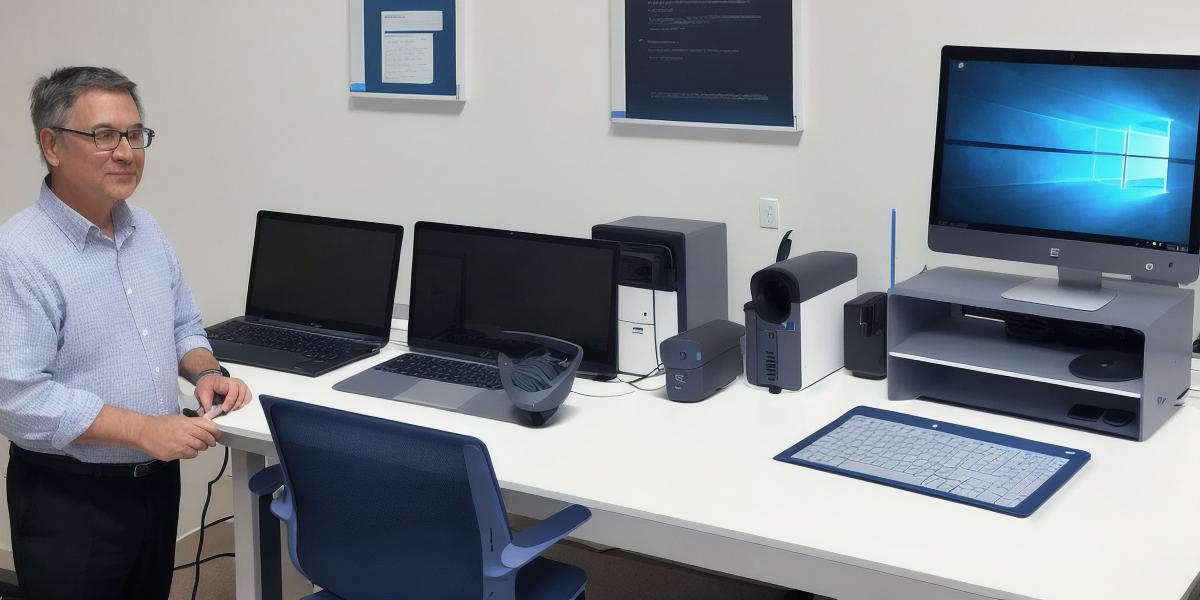Understanding the Differences between Assistive Technology and Assistive Devices

Assistive technology and assistive devices are often used interchangeably, but they have distinct differences. As an AI developer, understanding these differences is crucial to create technology that truly benefits individuals with disabilities. In this article, we will explore the key differences between assistive technology and assistive devices and how they can be used effectively in different contexts.
Assistive Technology vs Assistive Devices: A Clear Definition
Assistive Technology refers to software or hardware that is designed to help people with disabilities perform tasks more easily and efficiently. It can include things like screen readers, speech recognition software, and other tools that make it easier for people with visual or hearing impairments to access information and communicate effectively.
On the other hand, Assistive Devices are physical devices that are designed to help individuals with disabilities perform specific tasks. These can include things like mobility aids like wheelchairs and walkers, prosthetics, and other devices that help people with physical impairments move around more easily and independently.
Real-Life Examples of Assistive Technology and Assistive Devices
One real-life example of assistive technology is the use of screen readers to help individuals with visual impairments access information on their computer or mobile device. Screen readers read out loud the text on a screen, making it easier for people who are blind or have low vision to navigate and use their devices.
Another example of assistive technology is speech recognition software, which can be used by individuals with physical disabilities to communicate via voice commands. This type of software is particularly useful for people who have difficulty typing or using a keyboard.
Assistive Devices include things like prosthetics, which are artificial limbs that are designed to help individuals with amputations or other physical impairments move around more easily and independently. Another example of an assistive device is a hearing aid, which is worn in the ear to help people who are deaf or hard of hearing hear better.
How Assistive Technology and Assistive Devices Can Work Together
Assistive technology and assistive devices can work together to create a more accessible world for individuals with disabilities. For example, a person who uses a screen reader may also use a mobility aid like a wheelchair or walker to get around. Similarly, someone who wears a hearing aid may also use speech recognition software to communicate via voice commands.
In order for assistive technology and assistive devices to work together effectively, it is important to consider the specific needs of the individual using them. This may involve customizing the technology or device to fit the user’s unique needs and preferences.
Conclusion
Assistive technology and assistive devices are two different types of tools that can be used to help individuals with disabilities perform tasks more easily and efficiently. While they have some overlap, it is important to understand their distinct differences in order to create technology that truly benefits people with disabilities. By working together, assistive technology and assistive devices can create a more accessible world for everyone.
FAQs:
Q: What are the main differences between assistive technology and assistive devices?
A: Assistive Technology refers to software or hardware designed to help people with disabilities perform tasks more easily and efficiently, while Assistive Devices are physical devices designed to help individuals with disabilities perform specific tasks.
Q: Can assistive technology and assistive devices work together?
A: Yes, assistive technology and assistive devices can work together to create a more accessible world for individuals with disabilities. It is important to customize the technology or device to fit the user’s unique needs and preferences.








